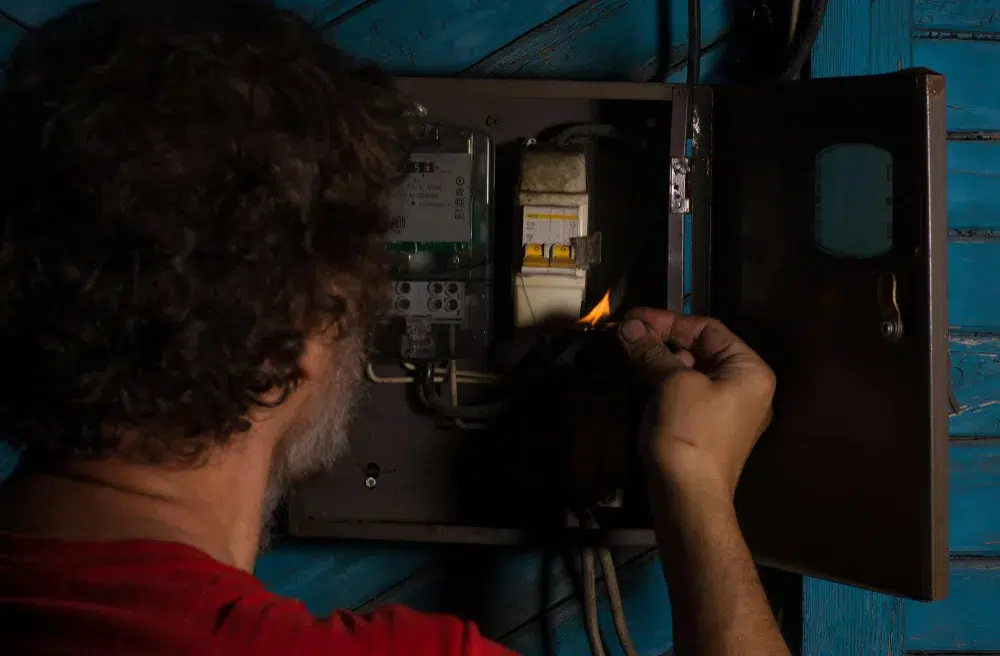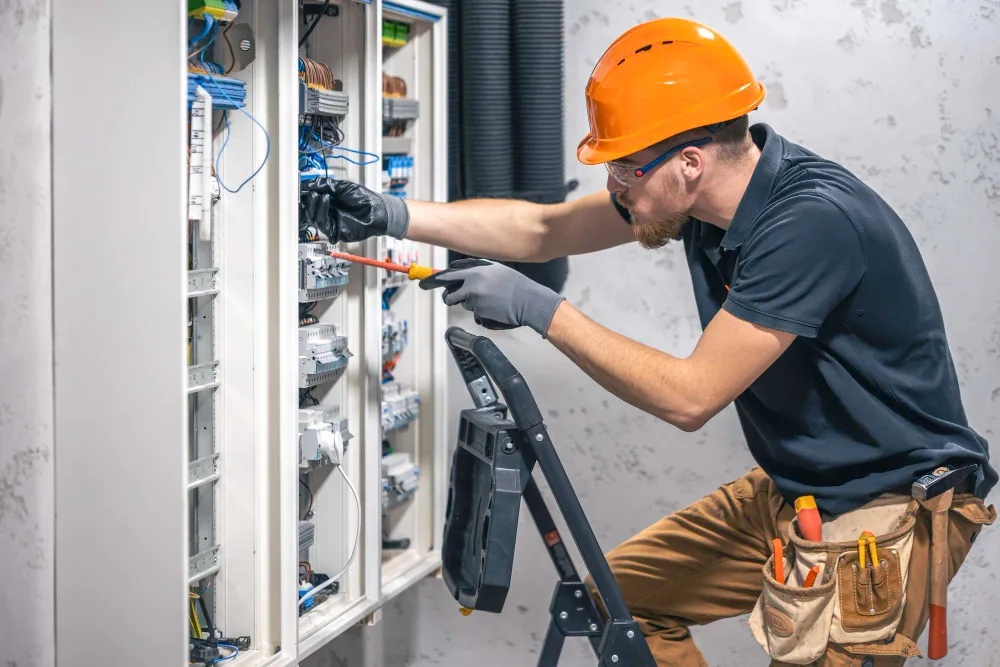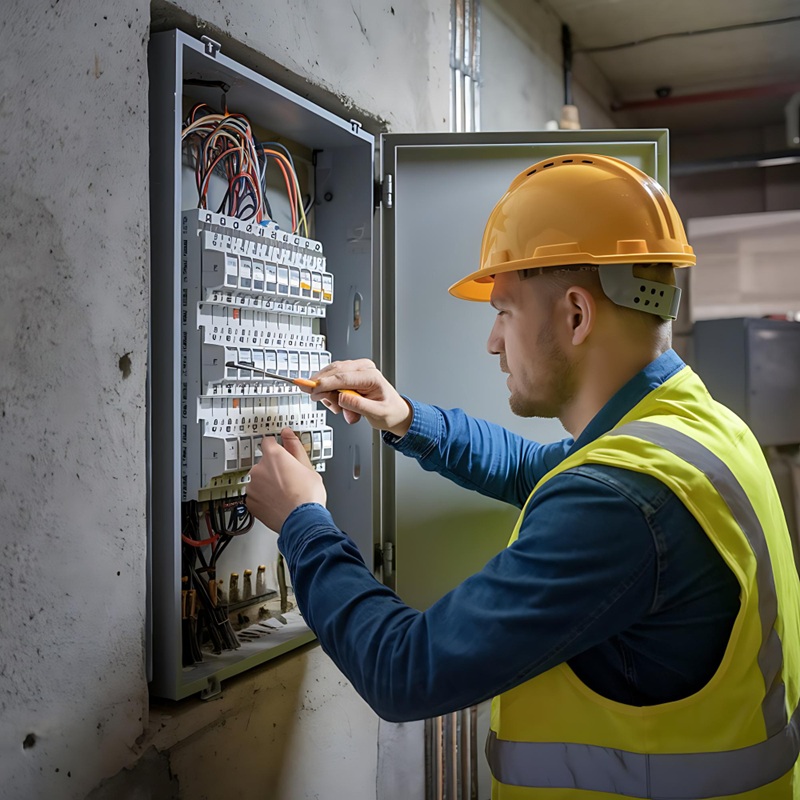Scorch marks on a breaker panel often carry a warning far more serious than a cosmetic flaw. They usually indicate hidden electrical dangers that could lead to fire hazards, property damage, or even severe injury. Many homeowners overlook these small dark spots, thinking they are minor issues, but the reality is far more alarming. Electricity leaves visible signs when it misbehaves, and scorch marks are often its loudest signal.
When left unattended, these burn marks tell a story of overheating wires, loose connections, or a breaker failing under pressure. That’s not just inconvenient it’s dangerous. Recognizing scorch marks in your electrical panel isn’t about aesthetics; it’s about protecting your home and family. This blog explains how scorch marks act as warning signs, what technical issues cause them, and why you must take corrective action quickly.
Why Scorch Marks Appear on a Breaker Panel
Scorch marks form when heat builds up around breakers or wiring connections. High resistance, faulty installation, or worn-out breakers generate excessive heat. Eventually, the heat leaves visible black or brown spots. Some of the main causes include:
- Loose Connections – A breaker that isn’t tightly seated in its slot causes arcing.
- Overloaded Circuits – Drawing more current than a breaker is rated for leads to overheating.
- Aging Breakers – Old components may fail to trip when required.
- Faulty Wiring – Damaged or undersized wires increase resistance, generating dangerous heat.
Ignoring scorch marks means ignoring the underlying fault. Heat continues to accumulate, pushing the system toward a complete failure or even an electrical fire.
Scorch Marks as Warnings of Hidden Electrical Dangers
Scorch marks are more than surface damage; they are clear warnings of Hidden Electrical Dangers. Unlike a tripped breaker that immediately cuts off power, scorch marks quietly signal that the panel is under stress.
Some hidden dangers they represent:
- Arc Faults – Sparks jump between loose or frayed wires, creating intense heat.
- Breaker Failure – A breaker that should cut power doesn’t, allowing overheating to worsen.
- Melted Insulation – Damaged insulation around wires increases risks of short circuits.
- Silent Fire Hazards – Many electrical fires start behind panels before homeowners notice any flames.
Understanding these warnings can save lives. If scorch marks are visible, it’s no longer a “watch and wait” situation it’s time for action.

When Circuit Breaker Replacement Becomes Critical
Circuit breakers are designed to protect your home by shutting off electricity during faults. However, once scorch marks appear, it’s often a sign the breaker has already failed or is about to. Circuit breaker replacement is not optional in such cases it’s necessary.
You may need replacement if you notice:
- Breakers that trip frequently or not at all.
- Burnt smells near the breaker panel.
- Melted or discolored breaker handles.
- Persistent scorch marks despite cleaning.
Replacing breakers restores your electrical panel’s ability to function as a safety system. Ignoring them risks catastrophic consequences.
Breaker Panel Safety: Early Signs Before Scorch Marks
Although scorch marks are alarming, there are earlier signs of stress you should not overlook:
- Buzzing or crackling noises coming from the panel.
- Warm breaker panel surfaces when touched.
- Dimming or flickering lights in multiple rooms.
- Burning odors even without visible damage.
These symptoms often precede visible burn marks. Acting early can prevent the situation from escalating into visible damage or fire hazards.
Why Hidden Electrical Dangers Should Never Be Ignored
Ignoring Hidden Electrical Dangers in a breaker panel can have devastating outcomes. Residential fires often trace back to unnoticed panel issues. The National Fire Protection Association (NFPA) reports thousands of house fires annually start with faulty electrical panels or wiring.
The danger lies in the fact that these problems stay hidden until damage becomes severe. By the time scorch marks appear, the electrical system is already compromised. Addressing these problems immediately with the help of a licensed electrician in Everett WA ensures your family’s safety.
Technical Issues That Cause Breaker Panel Scorch Marks
To understand the seriousness of scorch marks, let’s explore the technical reasons behind them:
- Overheating Conductors – When wires carry more current than designed, heat builds up, leaving dark stains.
- Improper Breaker Sizing – Installing undersized breakers creates overloads, while oversized breakers fail to trip.
- Faulty Lugs and Terminals – Loose metal contacts increase resistance, generating localized heat.
- Double Tapping – Connecting multiple wires to a single breaker slot leads to unsafe heating.
These issues aren’t cosmetic they directly compromise your panel’s safety. Immediate inspection and possible circuit breaker replacement are mandatory.
Why Professional Inspection is Necessary
DIY approaches may seem tempting, but breaker panel inspections are not a do-it-yourself task. A licensed electrician Everett WA has the tools, training, and expertise to:
- Test for voltage drops.
- Measure resistance in connections.
- Identify faulty breakers that appear functional.
- Replace outdated or dangerous components safely.
Without professional insight, you risk overlooking critical issues hidden behind the panel cover.

Preventing Hidden Electrical Dangers Before They Appear
Prevention is the most effective strategy against Hidden Electrical Dangers. Homeowners can protect their electrical systems through:
- Regular Professional Inspections – Annual checks ensure early detection of issues.
- Circuit Breaker Replacement Schedules – Replace breakers every 15–20 years or sooner if damage is visible.
- Load Management – Avoid plugging too many high-demand appliances into the same circuit.
- Upgrading Outdated Panels – Modern breaker panels with AFCI and GFCI breakers reduce risks significantly.
Prevention not only reduces risks but also extends the life of your electrical system.
Electrical Panel vs. Breaker Panel: Understanding the Difference
The terms electrical panel and breaker panel are often used interchangeably, but knowing the difference helps:
- Electrical Panel – The main distribution board for the home, containing the main disconnect and breakers.
- Breaker Panel – Specifically refers to the section where circuit breakers are housed.
Both terms apply to the system protecting your home. Scorch marks on either part deserve immediate professional attention.
Don’t Ignore the Warning Signs of Electrical Hazards
Scorch marks on your breaker panel are not minor flaws they are urgent warnings of Hidden Electrical Dangers. Acting quickly can prevent devastating fires, protect your family, and restore your home’s safety.
Don’t wait for a disaster to strike. Contact In-House Electric Services today and schedule a professional inspection. Whether you need circuit breaker replacement or a complete panel upgrade, our experts will handle it with precision and care. Call now at (425) 760-3203 to secure your home against electrical hazards.
FAQs About Circuit Breaker Replacement
1. What do scorch marks on a breaker panel mean?
They typically indicate overheating, loose wiring, or breaker failure, signaling Hidden Electrical Dangers.
2. Can I clean scorch marks and continue using the breaker?
No. Cleaning doesn’t solve the underlying problem. You may need circuit breaker replacement and professional inspection.
3. How often should a breaker panel be inspected?
Most experts recommend annual inspections, or sooner if you notice unusual smells, sounds, or heat.
4. How long does a circuit breaker last?
Typically 15–20 years. However, scorch marks or frequent tripping mean earlier replacement is required.
5. Should I replace the entire panel if I see scorch marks?
Not always. Sometimes circuit breaker replacement is enough, but only a licensed electrician Everett WA can confirm.

